
In the realm of disease outbreaks, a pandemic is a worst-case scenario. An epidemic becomes a pandemic when it spreads beyond a country’s border. Pandemics have ravaged humanity throughout its existence, quite often altering the course of history and sometimes even signaled the end of entire civilizations. Communicable diseases have been encountered ever since times immemorial. While some have been an epidemic, some others traveled across continents to cause a pandemic. The world has fought several pandemics in history and lost millions of lives.
Here’s a list of 10 pandemics the world has encountered in the 19th and 20th century
- Cholera pandemic (1817-1824)
- Smallpox pandemic (1870-1874)
- Plague pandemic (the 1890s- the third one)
- Spanish Flu H1N1(1918-20)
- 1947 epidemic (pseudopandemic)
- Asian Flu H2N2(1957-1958)
- Hong Kong flu pandemic H3N2 (1968-69)
- Abortive, Potentially Pandemic, Swine Influenza Virus Epidemic
- Russian Flu (1977-78)
- HIV/Aids (1981- present)
Cholera pandemic (1817-1824) a.k.a. the first Asiatic cholera pandemic
Originated near Calcutta, India, and spread throughout Asia and other parts of the world including the Middle East, eastern Africa, and the Mediterranean coast. Hundreds of thousands of people succumbed to the disease including several British soldiers. This was one of the first of several cholera pandemics to sweep through Asia and Europe during the 19th and 20th centuries, affecting almost every nation in Asia.
Cholera is caused by a bacterium called Vibrio cholera which typically lives in waters and people contract the disease through contaminated liquids, and eating foods that are raw or undercooked which are contaminated with the pathogen.
Symptoms include severe diarrhea, vomiting, leg cramps, dehydration, septic shock and even death in severe cases
Treatment: Currently, cholera is treated via fluid replacement therapy and antibiotics. Cholera vaccines are available, but they might only offer around 65% immunity.
Smallpox pandemic (1870-74)
The smallpox pandemic originated in France prior to the outbreak of the Franco-Prussian war and spread throughout the country. The disease which was initially endemic to Europe, Asia, and Arabia for several centuries, killed three out of ten people it infected and left the others with pockmarked scars. And centuries later, smallpox became the first pandemic to be ended by a vaccine. In the late 18th century, Edward Jenner discovered that milkmaids infected with a milder virus called cowpox seemed immune to the disease, which led to the discovery of the vaccine. And in 1980, the World Health Organization (WHO) declared that smallpox had completely been eradicated globally.

Smallpox was an infectious disease caused by variola major and variola minor- two virus variants.
The symptoms of the disease appear within 2 weeks after being infected. Symptoms include fever, red spots that appear on the face, hands, forearm and trunk, severe fatigue, vomiting, severe back pain, headache, and overall discomfort.
If there is an outbreak of smallpox today, it would be considered an international health emergency.
While there is no cure for smallpox, immunization can be very effective in preventing infection from developing once a person has been exposed to the virus. That was the strategy used to eradicate the pandemic during the 20th century.
Plague Pandemic (the 1890s)

the third plague pandemic, a major one started in Yunnan, China in the year 1855 and then spread to all inhabited continents in the 1890s through the 1900s, taking the lives of over 12 million people in India and China.
Plague is an infectious disease caused by bacteria Yersinia pestis which lives in small mammals like rats and their fleas.
Symptoms include fever, headache, chills, weakness, swollen, tender and painful lymph nodes, abdominal pain, shock and sometimes bleeding into the skin and other organs.
Treatment options include antibiotics like streptomycin, ciprofloxacin, or doxycycline alongside oxygen, IV fluids, and respiratory support. Unlike Europe’s disastrous bubonic epidemic, the plague is curable in most cases, with the help of antibiotics. These drugs work efficiently if administered within 24 hours after the onset of symptoms.
Spanish Flu H1N1(1918-20)
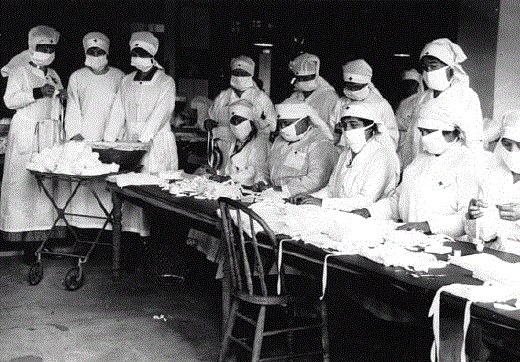
This is one of the deadliest in history, which affected over 500 million people worldwide and killed nearly 50 million individuals. The 1918 flu a.k.a. Spanish flu was first detected in Europe, the United States and some parts of Asia before it spread throughout globally. Since there wasn’t any effective drugs or vaccines to treat such a killer flu strain, the public was advised to wear protective face coverings like masks and by ordering businesses to open and close on staggered shifts to prevent overcrowding.
Flu or influenza is a virus that invades your respiratory system. It is highly contagious and spreads through an infected individual’s cough, sneeze, or talks – the respiratory droplets that get transmitted into the air and can be inhaled by others. Flu outbreaks continue to happen but vary in severity.
Symptoms might resemble a common cold with a runny nose, sneezing, and sore throat but unlike colds, the symptoms develop rapidly. Symptoms include fever over 100.4 F, muscle aches, chills, sweats, headaches, dry persistent cough, nasal congestion, sore throat, fatigue, and weakness.
Treatment includes plenty of fluids, bed rest, symptomatic medication, and antiviral drugs like oseltamivir, zanamivir, peramivir, or baloxavir. Paracetamol can help cure the symptoms but NSAIDs should be avoided. An annual dose of Flu vaccine can help prevent the disease and limit its complications.
The 1947 epidemic:
It was considered a mild pandemic because the disease was distributed globally despite causing only fewer deaths. The pseudopandemic of 1947 originated in late 1946 in an outbreak of influenza that occurred in Japan and Korea. It later spread to other military bases in the United States, and other countries. There was nothing mild about the illness in young individuals whose symptoms matched those of earlier descriptions of influenza.
Researchers found that changes in the antigenic composition of circulating viruses have rendered existing vaccines ineffective and therefore vaccines weren’t effective against the 1947 flu.
Asian Flu H2N2(1957-1958)
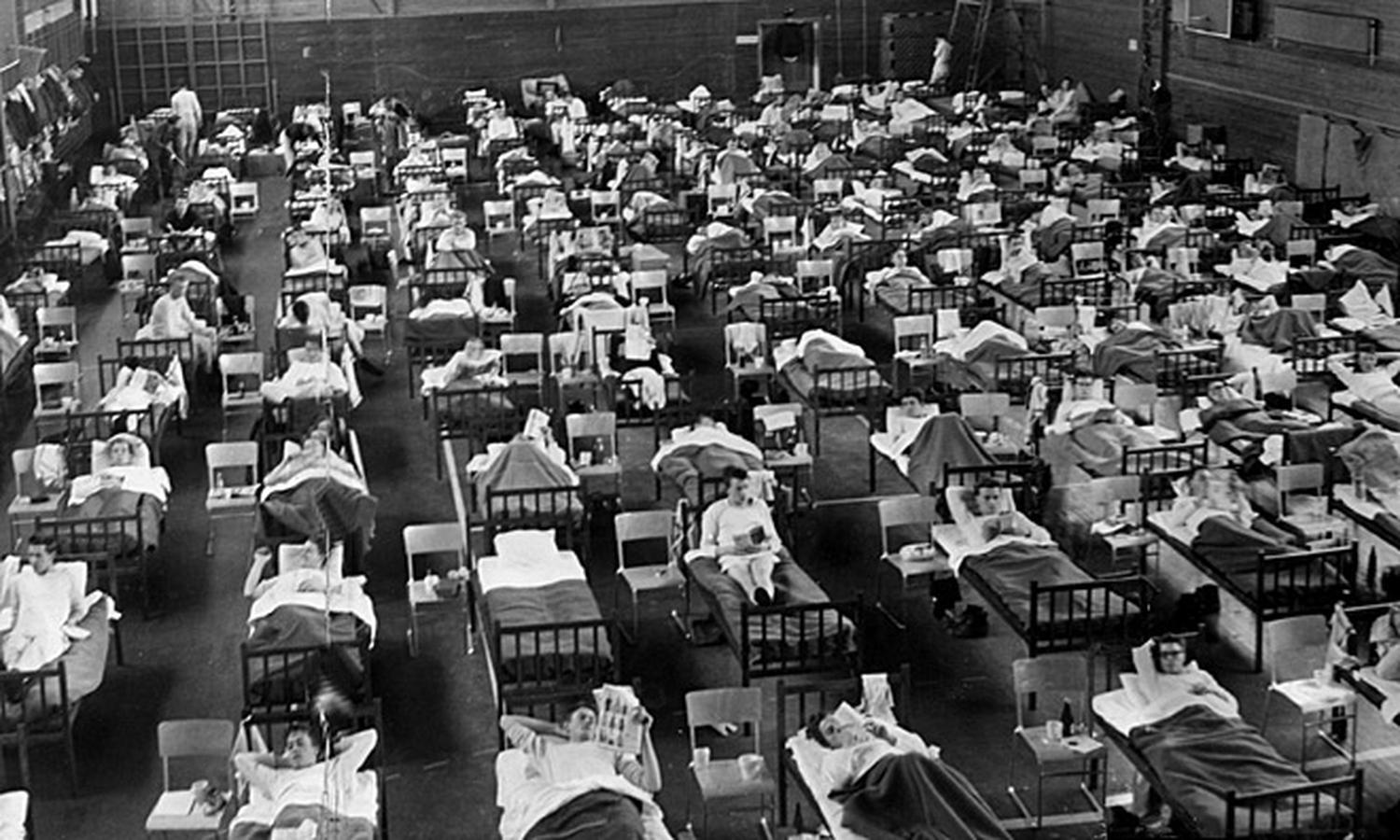
Influenza pandemic a.k.a. the Asian flu was a global pandemic of influenza A virus subtype H2N2 that was first detected in Guizhou, China. The pandemic killed at least one million people throughout the world. What started as an influenza epidemic in China, slowly spread to Hong Kong, Singapore, and then the United Kingdom, the United States, etc. The second wave which began in early 1958 was more pronounced among the elderly and was more fatal.
Later in October 1958, a vaccine was available in the United Kingdom. Despite being available only in limited quantities, its rapid deployment helped contain the pandemic. The H2N2 influenza virus continued to spread until 1968 when it transformed into another subtype- H3N2—the cause of the next pandemic.
The symptoms included high fever, body aches, chills, loss of appetite, weight loss, and complications included seizures, pneumonia, heart failure, and death.
The H2H2 influenza viruses have not been circulating in human beings since 1968, but they are still being regularly detected in the animal reservoir. Treatment options include the H2N2 vaccine which has about 54% efficacy against the mutated version H3N2 influenza virus.
Hong Kong flu pandemic H3N2 (1968-69)
Also known as the 1968 flu pandemic began in Hong Kong was caused by an H3N2 strain of influenza A virus which descended from H2N2 via antigenic shift. By the end of July 1968, there were multiple outbreaks reported in Singapore and Vietnam. And by September, the flu had spread to India, the Phillippines, Europe, North Australia, the United States, Japan, Africa, and South America by 1969. This pandemic killed up to four million people worldwide.
The H3N2 contained genes from the avian influenza virus and the new subtypes arose in pigs coinfected with avian and human viruses that were then transferred to human beings.
Symptoms include fever, cough, runny nose, congestion, headache, sore throat, fever, body aches, pains, chills, and fatigue.
Treatment includes influenza antiviral drugs that are intended to treat seasonal flu such as oseltamivir, zanamivir, baloxavir, and peramivir. The annual flu vaccine can protect against three different strains of flu including H3N2.
Abortive, Potentially Pandemic, Swine Influenza Virus Epidemic (1976)
This happened in Fort Dix, New Jersey in 1976 and was suspected due to swine influenza viruses. A high-yield reassortant virus was generated, which was subsequently tested as a vaccine in a clinical trial which included over 3,000 individuals. Due to the lack of cases outside Fort Dix and the occurrence of neurologic complications with administration of swine flu vaccine indicated that the attempt of immunization was a failure.
Russian Flu (1977-78)
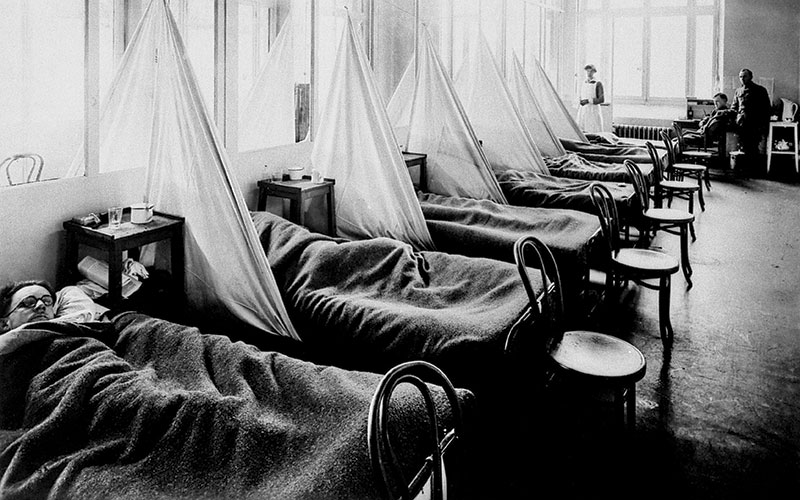 Also known as red flu or red influenza, human H1N1 virus first came to attention in late 1977 in the Soviet Union, but later reported to be originated in China in May 1977. What started as an epidemic, spread rapidly but restricted to only young people below 25 years of age. The causative influenza virus strain caused only mild disease. It killed about 1 million people worldwide and was the last pandemic of the 19th century.
Also known as red flu or red influenza, human H1N1 virus first came to attention in late 1977 in the Soviet Union, but later reported to be originated in China in May 1977. What started as an epidemic, spread rapidly but restricted to only young people below 25 years of age. The causative influenza virus strain caused only mild disease. It killed about 1 million people worldwide and was the last pandemic of the 19th century.
The age-restricted pandemic was caused by the revisitation of an H1N1 virus strain and its ability to infect people who hadn’t been exposed earlier to the virus.
The affected individuals endured fever, cough, sore throat, muscle aches, conjunctivitis, pneumonia, chills, chest pain, breathing difficulties, vomiting, and in severe cases, death due to infected lungs filled with fluid.
Russian flu was treated using symptomatic medication and doctors used bitter-tasting quinine for fever since it had been successful in combating malaria. However, it did nothing for the flu other than exposing people to risky adverse effects like stomach cramps.
HIV/Aids (1981- present)
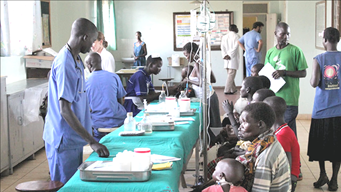
Ever since the first case of acquired immunodeficiency syndrome (AIDS) were reported in 1981, infection with Human immunodeficiency virus (HIV) has grown to pandemic proportions. It has affected about 65 million people and resulted in over 35 million deaths worldwide.
The HIV likely developed from a chimpanzee virus that transferred to human beings in West Africa in the 1920s and then made its way through the planet. And by the late 20th century it became a pandemic. Currently, about 64% of the estimated 40 million individuals who live with the disease are from Africa.
For several decades, AIDS had no cure. But medications developed in the late 1990s help patients lead a normal life span. And this year, around 3 cases have been completely cured of HIV. Long-term remission from HIV was achieved via a special bone-marrow transplant which came from donors who possessed a relatively rare genetic mutation that confers resistance to HIV.
How to prepare for pandemics?
Every few decades, potentially deadly pathogens and viruses spread throughout the world, and particularly, these influenza pandemics are quite a threat that nations need to prepare for. The World Health Organization offers information and course series that cover aspects of preparedness, like public health measures, risk communication, and surveillance during a pandemic.
Here are some effective ways to be prepared for a pandemic:
- Healthcare plans like scaling up hospital capacities by postponing non-essential surgeries, mobilizing or redeploying recently retired, military and student staff, preparing temporary hospitals, etc.
- Since testing is very important, plans to access additional lab capacity and authorities to consider stockpile chemicals and equipment lab use
- Researchers to best analyze the information available and collaborate across disciplines to understand an emerging disease at the earliest
- Storing up medicines and supplies and start working on finding new vaccine candidates
- Public health guidelines and strategies to protect the country
- Watching for disease outbreaks of different viruses and being prepared to quickly respond to them
- Multiple government agencies can work together and use technology to communicate with each other
- Grocery supply chains and supermarkets can plan for how they can respond quickly to increasing demands
- Finding ways to help communities provide essential services like public safety and health during a pandemic
- Urging the public to take preventative measures like practicing good hygiene like hand washing, self-isolating, avoiding large gatherings and take caution with pet animals
- Finally, having a framework that enables things like building temporary hospitals, relevant scientific advice and effective communication with the public
ReferencesMore importantly, to be prepared for the unpredictable!
https://www.cdc.gov/flu/pandemic-resources/basics/past-pandemics.html
https://www.livescience.com/worst-epidemics-and-pandemics-in-history.html
https://www.ncbi.nlm.nih.gov/pmc/articles/PMC3291411/
https://www.euro.who.int/en/health-topics/communicable-diseases/influenza/pandemic-influenza/past-pandemics#:~:text=Pandemics%20of%20the%2020th%20century,million%20deaths%20in%201918%E2%80%931919.
https://www.thehindu.com/news/international/pandemics-in-the-history/article31163251.ecehttps://en.wikipedia.org/wiki/1817%E2%80%931824_cholera_pandemic
https://www.history.com/topics/inventions/history-of-cholerahttp://www.ph.ucla.edu/epi/snow/pandemic1817-23.html
https://www.mayoclinic.org/diseases-conditions/flu/symptoms-causes/syc-20351719
https://www.history.com/topics/world-war-i/1918-flu-pandemic
https://en.wikipedia.org/wiki/Third_plague_pandemichttps://jmvh.org/article/the-history-of-plague-part-1-the-three-great-pandemics/
https://www.mphonline.org/worst-pandemics-in-history/
https://www.history.com/topics/middle-ages/pandemics-timeline
https://www.cdc.gov/mmwr/preview/mmwrhtml/mm5531a1.htm#:~:text=Since%20the%20first%20cases%20of,deaths%20(1%2C2).
https://www.ncbi.nlm.nih.gov/pmc/articles/PMC3291397/
http://m.whodoyouthinkyouaremagazine.com/coronavirus-there-was-russian flu#:~:text=Once%20the%20flu%20had%20its,side%20effects%20like%20stomach%20cramps.
https://www.ncbi.nlm.nih.gov/pmc/articles/PMC5198166/https://openwho.org/channels/pandemics
https://theconversation.com/how-to-prepare-for-a-pandemic-137116
https://www.sciencealert.com/how-should-you-prepare-for-a-pandemic






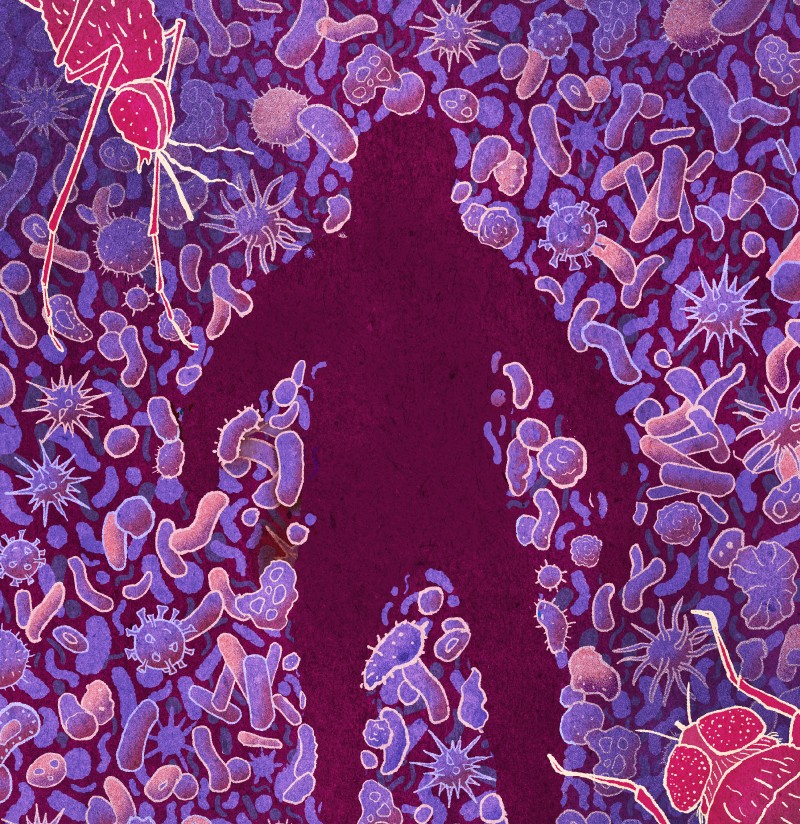


Leave a Reply